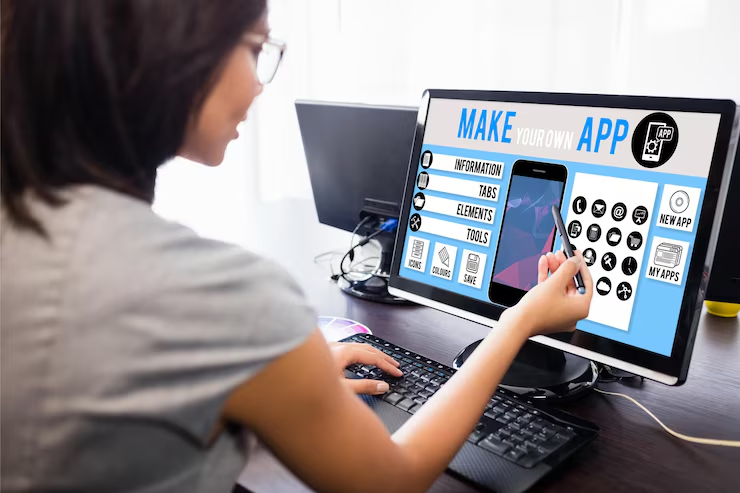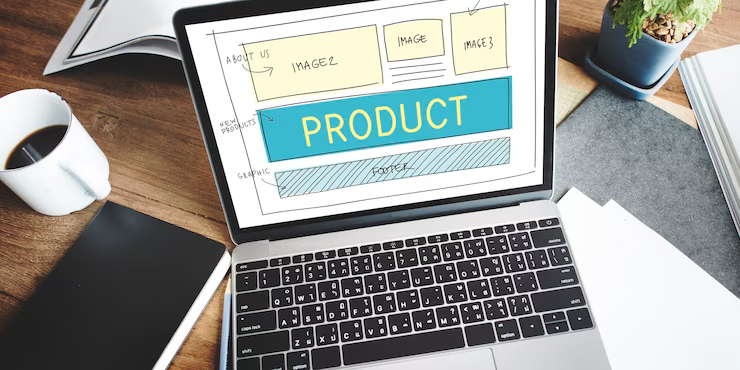What is Ecommerce Web Design?
The ecommerce website design essentially defines the user interface (UX) and graphic design of web development of an online store whose main aim is to offer a hassle-free user experience to visitors. Ordinary websites do not have the components of product pages, shopping carts, user accounts, secure payment gateways, and inventory management systems, while ecommerce sites include all of these features. Web platforms such as Shopify, WooCommerce, or Magento are famously employed as the platform base. They are flexible and highly scalable.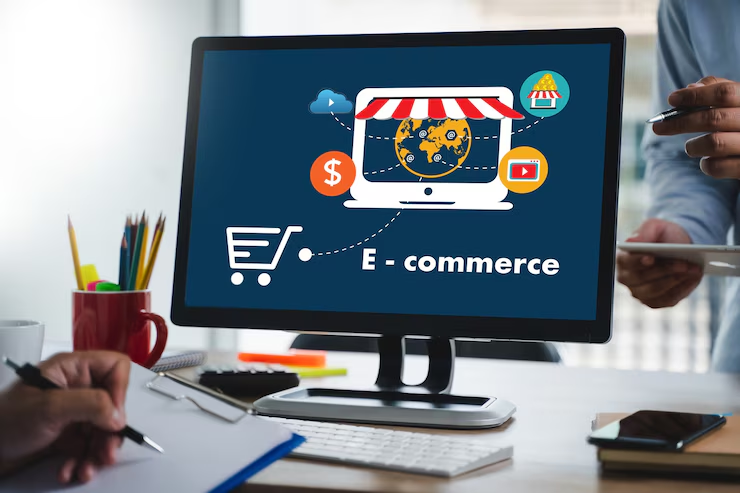 Suffice it to say that whatever supports the brand goals should not only be clear about what they have to offer but can also be simple to use for any user on any device. All necessary elements should support the bottom line of both the customers and the business-convincing transactions, assuming positive feelings about the store are generated by way of spry navigation and an easy environment, which should entice the customer back to revisit.
Suffice it to say that whatever supports the brand goals should not only be clear about what they have to offer but can also be simple to use for any user on any device. All necessary elements should support the bottom line of both the customers and the business-convincing transactions, assuming positive feelings about the store are generated by way of spry navigation and an easy environment, which should entice the customer back to revisit.
Why Ecommerce Website Design Matters
A good design means confidence and easy shopping for customers. It can enhance SEO, page load speed, and mobile responsiveness, all factors that have a direct impact on conversion and usability. Users attach themselves to a great design and, in return, are reassured about the store's credibility. Studies have shown that the user forms a judgment of a website in less than 0.05 seconds. A cluttered or outdated design could immediately repel a potential client and destroy the brand image. Good design should not just hold on to users but also increase engagement and reduce bounce rates while converting shoppers by prompting them toward product exploration, providing an easy checkout, and offering an exceptional shopping experience.Core Elements of an Effective Ecommerce Website Design
Homepage Design
Your homepage works as the most important destination for visitors. Here, it provides that crucial first impression regarding your store or shop and potentially could create urgency or demoralize potential customers from the word go. Hero Section: Some of the best-selling products or new products should be prominently shown in the hero section using excellent quality images and compelling captions. Promotional Banners: Current discount offers or new arrivals, seasonal offer promotions, or any type of promotional offer should be displayed via some powerful banners. Search Bar: It should be placed on the homepage in a very clear visibility location so that users can search easily for what they are looking for. Dropdown Menu: A simple menu to all; to help navigation of users, thus dropping off rates down.Product Page Design
Landing on the product page is where conversion takes place, so it must be selling and telling at the same time in terms of visuals and details.- High-quality images with a zoom feature to enhance selected product features.
- Show product videos that explain the product's use or that add value to the product in different manners.
- Clear, detailed descriptions, with benefits and product specs bulleted.
- Offer size charts and color options for better decision-making.
- Allow visitors to know about product availability so as to manage their expectations.
- Transparently display any shipping information and return policies.
Checkout Page Design
A good checkout process makes everything so simple. Getting through the checkout process can be a conversion killer, meaning streamlining the process exponentially increases conversions.- Guest checkout option, so customers can wrap up their transactions quickly.
- Auto-completion and auto-detection in filling form fields will help in user conversion.
- Multiple payment gateways (credit cards, PayPal, UPI, etc.) that suit the payment convenience level of users.
- It's a good idea, considering the payment process, to give an image of security and trust. That means SSL and trust badges will be required.
Navigation and Menu Structure
Good navigation is all about the visitor finding what he is looking for without much friction or confusion; implement the following:- Mega menus: Offer a very logical arrangement for a large product catalog.
- Breadcrumbs: Should guide users when they want to backtrack fast and give the site orientation.
- Sticky headers: A great one for user navigations that can withstand whatever scrolling.
Mobile-Friendly & Responsive Design
The number of users who actually shop using their mobile devices has exceeded laptops and desktops. That's why you've got to make mobile design your chief focal area of concern. Ensure that it's fast and suited for touch navigation like that of thumbs. Use Scalable Vector Graphics (SVGs) (vector images scale as intended across devices, compress images to lessen load times), and pick any responsive frameworks such as Bootstrap to produce consistent, graduated user experience throughout all devices.UI/UX Design Best Practices for Ecommerce
User interface (UI) and (UX) design are essential for the business's success. Naturally, following the best practices helps to create attractive and functionally robust website.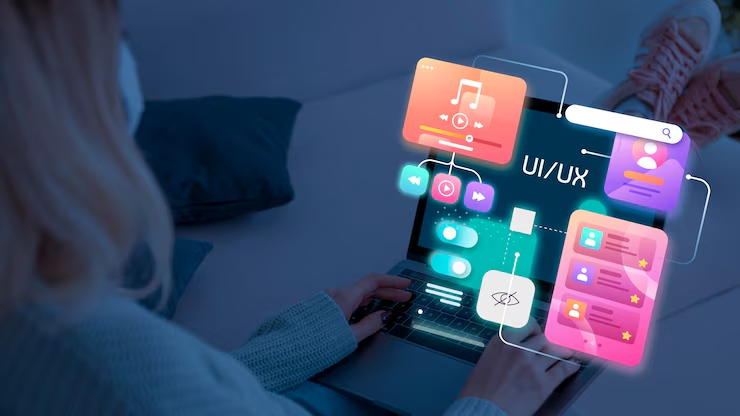
- Consistent use of brand and color schemes, reflecting your brand identity.
- Readable fonts and adequate contrast for accessibility and visual comfort.
- Long/short content with correct white space to keep users interested, access all aspects, and focus attention on the page.
- Nice-sized and mobile/desktop-friendly buttons and CTAs that are simple to tap with the index finger.
- Fast load times (under 3 seconds) to limit unsolicited bounces.
- Call to action features such as "Add to Cart," "Buy Now," and "Wishlist."
Conversion-Focused Ecommerce Design
Psychological triggers plus strategic design factors convert visitors. Hence:- Urgency & Scarcity: Use countdown timers or indicators of limited stock to encourage immediate action.
- Trust Factors: User testimonials, ratings, and trust badges serve as reassurances.
- Social Proof: Indicate the number of customer purchases or items added to cart for that product.
- Free Shipping Bar: Shows how much more the user needs to spend to qualify for free shipping.
- Live Chat: Provides customer support in resolving queries in real-time to help in conversions.
Ecommerce Web Design Trends in 2025
Keeping up with current trends in design will help keep one relevant, engaging, and innovative. Some of the trending design elements include: 1. Minimalistic and clean layout with focus on usability. 2. AI-enabled product recommendations for a personalized shopping experience. 3. Dynamic content block and real-time personalization engines. 4. Voice activated search and command interface. 5. Integration of Augmented Reality/Virtual Reality for immersive product previews. 6. A dark mode option for comfortable browsing. The aim is to interact with the user, increase the level of personalization, and immerse them in the digital experience.Choosing the Right Platform for Ecommerce Web Design
Choosing the right platform lays the foundation for scalability, security, and performance. Below is a breakdown:- Shopify: So user-friendly, scalable, and just right for dropshipping and medium businesses.
- WooCommerce: Very flexible, very open source; best for WordPress-based stores.
- Magento: Enterprise-grade solution, highly customizable and advanced feature-rich.
- BigCommerce: All-in-one SaaS solution which comes with strong out-of-the-box functionality.
- Wix Ecommerce: Beginner friendly drag-and-drop builder.
Common Ecommerce Design Mistakes to Avoid
By ignoring the common errors, one ensures a smooth user experience and higher conversions:- Overcrowded pages that feature too many elements, giving confusing message to users.
- Non-existent mobile optimization; therefore, no better performance for smaller screens.
- A confusing navigation structure; nearly impossible for customers to locate a product.
- Slow load time, annoying even the most active of users.
- Irregular branding throughout the platform, creating distrust.
- Ignoring accessibility requirements like alt tags and keyboard navigation.
Custom Ecommerce Web Design vs. Templates
- Custom Design: These designs are developed for an individual set of business needs, giving better branding capabilities, unique functionality, and higher UX. This is a better choice for businesses that want to stand out and scale up.
- Templates: Fast deployment, easy to maintain, cheap to run, but in return, they come with a lot less uniqueness and customization.
Hiring an Ecommerce Web Design Company
Outsourcing ecommerce design can save time by reducing the potential for errors and putting into consideration an outside opinion. Factors to consider include the following:- Portfolio and client testimonials serve as a basis for the evaluation of past performance.
- Experience in your specific industry niche.
- Technical capabilities custom APIs, CMS integrations, security protocols.
- Ongoing support and maintenance services.
- Open pricing with clearly stated timelines.
Explore the Top 5 Ecommerce Web Design Companies in 2025
1. InfimintusTech
Headquarters: Indore in Madhya Pradesh of India. Website: www.infimintustech.comOverview:
InfimintusTech is a budding IT company in the arena of Ecommerce Web Design known to create beautiful state-of-the-art ecommerce websites for small businesses, enterprises, and startups.Ecommerce Web Design Capabilities:
- Custom-built Shopify, WooCommerce, Magento, and headless ecommerce sites.
- Responsive, Mobile-first UX/UI design.
- Conversion-oriented product pages and checkout flows.
- Backend API Payment and ERP integrations.
- SEO optimized and performance-driven storefronts.
Cost of Ecommerce Web Design
Design pricing varies significantly depending on features, complexity, and level of customization.- Basic level: $500-$2000 (template based, few features)
- Intermediate level: $3000-$7000 (some minor modifications, elevated UX)
- Advanced level: $8000-$20000+ (fully custom design, enterprise-scale functionality)
How to Maintain and Update an Ecommerce Website Design
Maintenance of an ecommerce site involves:- Changing product listings and categories regularly.
- Changing promotional banners according to season or offer.
- Checking for broken links, outdated content, bugs, etc.
- Conducting A/B testing of CTAs and landing pages to increase conversion.
- Use analytics to monitor user behavior and conversion paths.
- Update plugins and themes to the latest version.
- Monthly UX audit and SEO checks should be run for smooth working.
Ecommerce SEO and Web Design
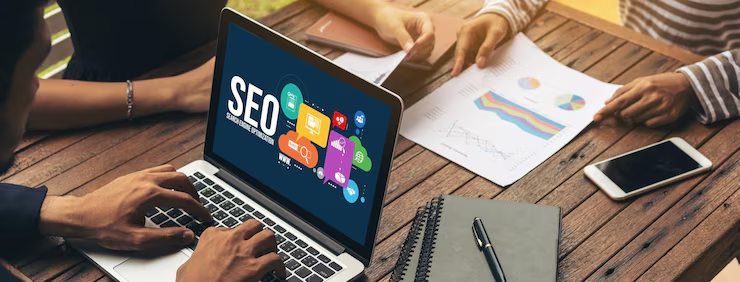 SEO and web design have to work hand in hand to maximize discoverability and user engagement. Some recommendations are:
SEO and web design have to work hand in hand to maximize discoverability and user engagement. Some recommendations are:
- Opt for SEO-friendly URLs, title tags, and meta descriptions.
- Make mobile optimization, Core Web Vitals compliance.
- Use schema markup to increase visibility with rich snippets.
- Compress and tag images for load time and indexing.
- Speed optimization with caching, lazy loading, CDN integration.
- Include blog sections for content marketing and targeting long-tail keywords.
Tools and Software for Ecommerce Design
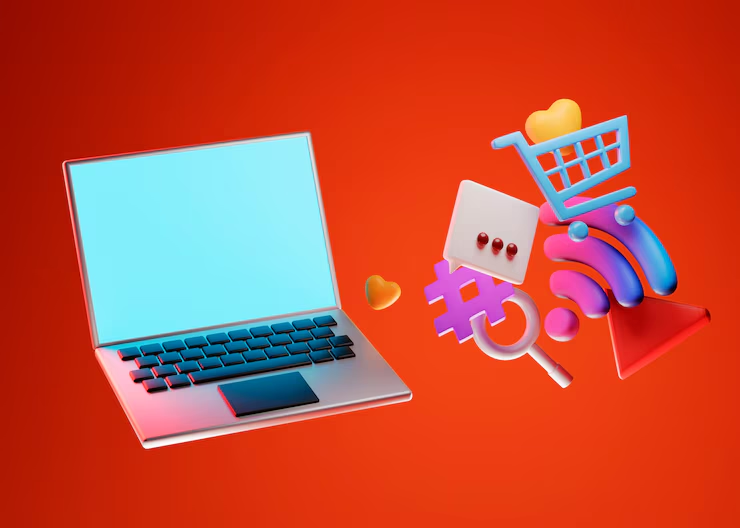 Use the right tools for productivity, creativity, and quality: Adobe XD/Figma:
Industry-standard UI/UX design platforms.
Canva: For quick and simple creation of graphic assets.
Elementor/Shogun: Page builders for WordPress and Shopify.
Google Page Speed Insights: To analyze and optimize performance.
Hotjar: Heatmaps and session recordings for analyzing user behavior.
Screaming Frog: All-in-one technical SEO auditing tool.
Use the right tools for productivity, creativity, and quality: Adobe XD/Figma:
Industry-standard UI/UX design platforms.
Canva: For quick and simple creation of graphic assets.
Elementor/Shogun: Page builders for WordPress and Shopify.
Google Page Speed Insights: To analyze and optimize performance.
Hotjar: Heatmaps and session recordings for analyzing user behavior.
Screaming Frog: All-in-one technical SEO auditing tool.
Conclusion
FAQ's
Q1: What are the differences between ecommerce and normal designs? The ecommerce web designs in India are quite different from a standard web design. E-com is a diverse kind of functionality that pertains to online shopping, while a normal site may just offer information on business profiles, introduce the services offered, while an e-commerce platform encompasses product catalogs, shopping carts, payment gateways, customer login systems, and order tracking, among others. With these advanced features, the user experience of safe online transactions is enhanced.Q2: How much do ecommerce designs cost in India? Cost for ecommerce design in India depends on their complexity and features. Basic ecommerce designs for small businesses may go something between ₹30,000 to ₹50,000 while midrange websites with some degree of customization may vary from ₹80,000 to ₹2,00,000. Enterprise-level ecommerce solutions containing advanced features, mobile responsiveness and third party options may go beyond 5,00,000.
Q3: What will be the best ecommerce design tools in 2025? One of the best ecommerce design tools in 2025 will be Figma and Adobe XD i.e. for wireframes and UI/UX designs and then Elementor for building a drag and drop WordPress website, Canva for graphics, and Hotjar for analyzing user interaction and heatmap. The tools help in the designing of user-friendly and responsive ecommerce sites potential to attract and convert visitors.
Q4: How can a ecommerce design help conversion? Ecommerce design, therefore, leads to conversion by shaping the user experience. Simple navigation, high-res product images, convincing CTAs, and fast product-loading pages limit customer drop-offs and increase their trust in the brand: fast product-loading pages. Further, speeding up checkout, along with building trustworthy signals such as secure payment icons and rating/review displays, are additional contributors to ascent of purchase volume.
Q5: Do I need a custom design or ready-made template? Both options serve different needs. A unique identity is ensured by a custom ecommerce design with tailored, exclusive features and scalability-suited with businesses looking to create a digital business identity. Ready-made templates can be pocket-friendly and quick at deploying-preferable for a startup or small-scale business. Scaling companies migrate into custom designs as their brands grow.
Read Our Another Article's:
Search Jobs Here Pay-Per-Click (PPC) Services: A Complete Guide to Drive Targeted Traffic and Maximize ROI
5. IBM Cloud
Headquarters: Armonk, New York, USA Website: www.ibm.com/cloud
Overview:
IBM Cloud supports large-scale, secure ecommerce platforms that can perform with the enterprise-level standard. Such make it suitable for regulated industries or global operations.
Ecommerce Web Design Capabilities:
- High security hosting and performance.
- AI-based product recommendations powered by IBM Watson.
- Integration with supply chain and inventory systems.
- Designed for enterprise ecommerce operations.
Cost of Ecommerce Web Design
Design pricing varies significantly depending on features, complexity, and level of customization.- Basic level: $500-$2000 (template based, few features)
- Intermediate level: $3000-$7000 (some minor modifications, elevated UX)
- Advanced level: $8000-$20000+ (fully custom design, enterprise-scale functionality)
How to Maintain and Update an Ecommerce Website Design
Maintenance of an ecommerce site involves:- Changing product listings and categories regularly.
- Changing promotional banners according to season or offer.
- Checking for broken links, outdated content, bugs, etc.
- Conducting A/B testing of CTAs and landing pages to increase conversion.
- Use analytics to monitor user behavior and conversion paths.
- Update plugins and themes to the latest version.
- Monthly UX audit and SEO checks should be run for smooth working.
Ecommerce SEO and Web Design
 SEO and web design have to work hand in hand to maximize discoverability and user engagement. Some recommendations are:
SEO and web design have to work hand in hand to maximize discoverability and user engagement. Some recommendations are:
- Opt for SEO-friendly URLs, title tags, and meta descriptions.
- Make mobile optimization, Core Web Vitals compliance.
- Use schema markup to increase visibility with rich snippets.
- Compress and tag images for load time and indexing.
- Speed optimization with caching, lazy loading, CDN integration.
- Include blog sections for content marketing and targeting long-tail keywords.
Tools and Software for Ecommerce Design
 Use the right tools for productivity, creativity, and quality: Adobe XD/Figma:
Industry-standard UI/UX design platforms.
Canva: For quick and simple creation of graphic assets.
Elementor/Shogun: Page builders for WordPress and Shopify.
Google Page Speed Insights: To analyze and optimize performance.
Hotjar: Heatmaps and session recordings for analyzing user behavior.
Screaming Frog: All-in-one technical SEO auditing tool.
Use the right tools for productivity, creativity, and quality: Adobe XD/Figma:
Industry-standard UI/UX design platforms.
Canva: For quick and simple creation of graphic assets.
Elementor/Shogun: Page builders for WordPress and Shopify.
Google Page Speed Insights: To analyze and optimize performance.
Hotjar: Heatmaps and session recordings for analyzing user behavior.
Screaming Frog: All-in-one technical SEO auditing tool.
Conclusion
FAQ's
Q1: What are the differences between ecommerce and normal designs? The ecommerce web designs in India are quite different from a standard web design. E-com is a diverse kind of functionality that pertains to online shopping, while a normal site may just offer information on business profiles, introduce the services offered, while an e-commerce platform encompasses product catalogs, shopping carts, payment gateways, customer login systems, and order tracking, among others. With these advanced features, the user experience of safe online transactions is enhanced.Q2: How much do ecommerce designs cost in India? Cost for ecommerce design in India depends on their complexity and features. Basic ecommerce designs for small businesses may go something between ₹30,000 to ₹50,000 while midrange websites with some degree of customization may vary from ₹80,000 to ₹2,00,000. Enterprise-level ecommerce solutions containing advanced features, mobile responsiveness and third party options may go beyond 5,00,000.
Q3: What will be the best ecommerce design tools in 2025? One of the best ecommerce design tools in 2025 will be Figma and Adobe XD i.e. for wireframes and UI/UX designs and then Elementor for building a drag and drop WordPress website, Canva for graphics, and Hotjar for analyzing user interaction and heatmap. The tools help in the designing of user-friendly and responsive ecommerce sites potential to attract and convert visitors.
Q4: How can a ecommerce design help conversion? Ecommerce design, therefore, leads to conversion by shaping the user experience. Simple navigation, high-res product images, convincing CTAs, and fast product-loading pages limit customer drop-offs and increase their trust in the brand: fast product-loading pages. Further, speeding up checkout, along with building trustworthy signals such as secure payment icons and rating/review displays, are additional contributors to ascent of purchase volume.
Q5: Do I need a custom design or ready-made template? Both options serve different needs. A unique identity is ensured by a custom ecommerce design with tailored, exclusive features and scalability-suited with businesses looking to create a digital business identity. Ready-made templates can be pocket-friendly and quick at deploying-preferable for a startup or small-scale business. Scaling companies migrate into custom designs as their brands grow.
Read Our Another Article's:
Search Jobs Here Pay-Per-Click (PPC) Services: A Complete Guide to Drive Targeted Traffic and Maximize ROI










